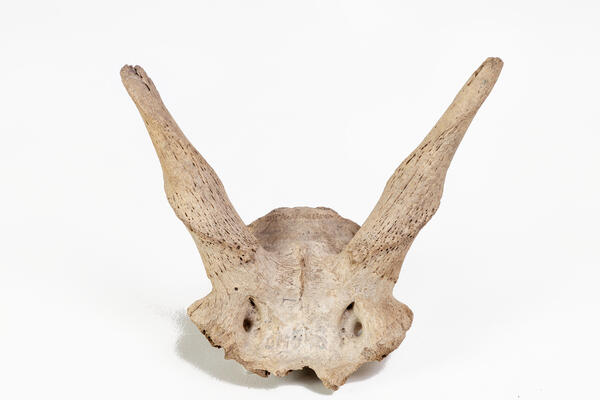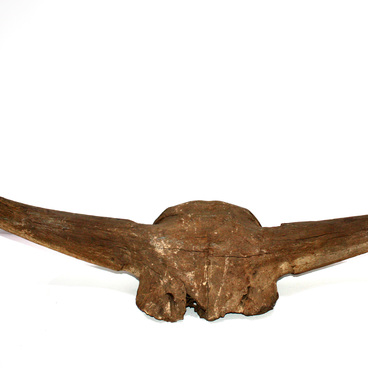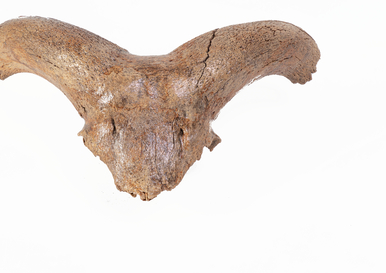The Kyakhta spiral-horned antelope, also known as the Trans-Baikal spiral-horned antelope, lived in a large area of Central Asia until the Late Pleistocene. The spiral-horned antelope was a contemporary of Paleolithic man and probably served as an object of hunting for them, but about 10 thousand years ago the animal became extinct.
Fossils of the animal, most often horns, are still found in Eastern Kazakhstan, Eastern Sayan, South-Eastern Baikal, Western Transbaikalia, Mongolia, and Northern China. The first such find discovered in the vicinity of the city of Troitskosavsk (present: Kyakhta), was described in 1910 by Russian paleontologist Maria Vasilyevna Pavlova. A complete skeleton of the spiral-horned antelope is a great paleontological rarity, so there has long been controversy over the appearance of the animal. For example, the famous zoologist Ivan Ivanovich Sokolov who studied the skeleton of the Kyakhta spiral-horned antelope pointed out a combination of signs of a bull, antelope, and a very large goat. He suggested that it was a very massive and heavy animal with short limbs similar in proportion to those of a musk ox. Subsequently, this view was adopted by other authors and scientists. However, it was later proved that the animal was much more slender and tall-legged. It was similar in size and appearance to the African Eland.
The head of the Kyakhta spiral-horned antelope probably also resembled the head of the African Eland with a pointed snout and straight twisted horns strongly tilted back. The length of the latter was 20-30 centimeters, while the length of the skull was 35 centimeters.
The spiral-horned antelope did not run fast due to a relatively small length of the limbs and shoulder bones of the animal. The species inhabited mainly open spaces, such as steppes, forest steppes, and possibly foothills and intermountain depressions.
Living in arid conditions that existed at that time on a large territory of Transbaikalia, the Kyakhta spiral-horned antelope fed on dry grassy vegetation. Subsequent abrupt climate changes could have caused the animal’s extinction.



